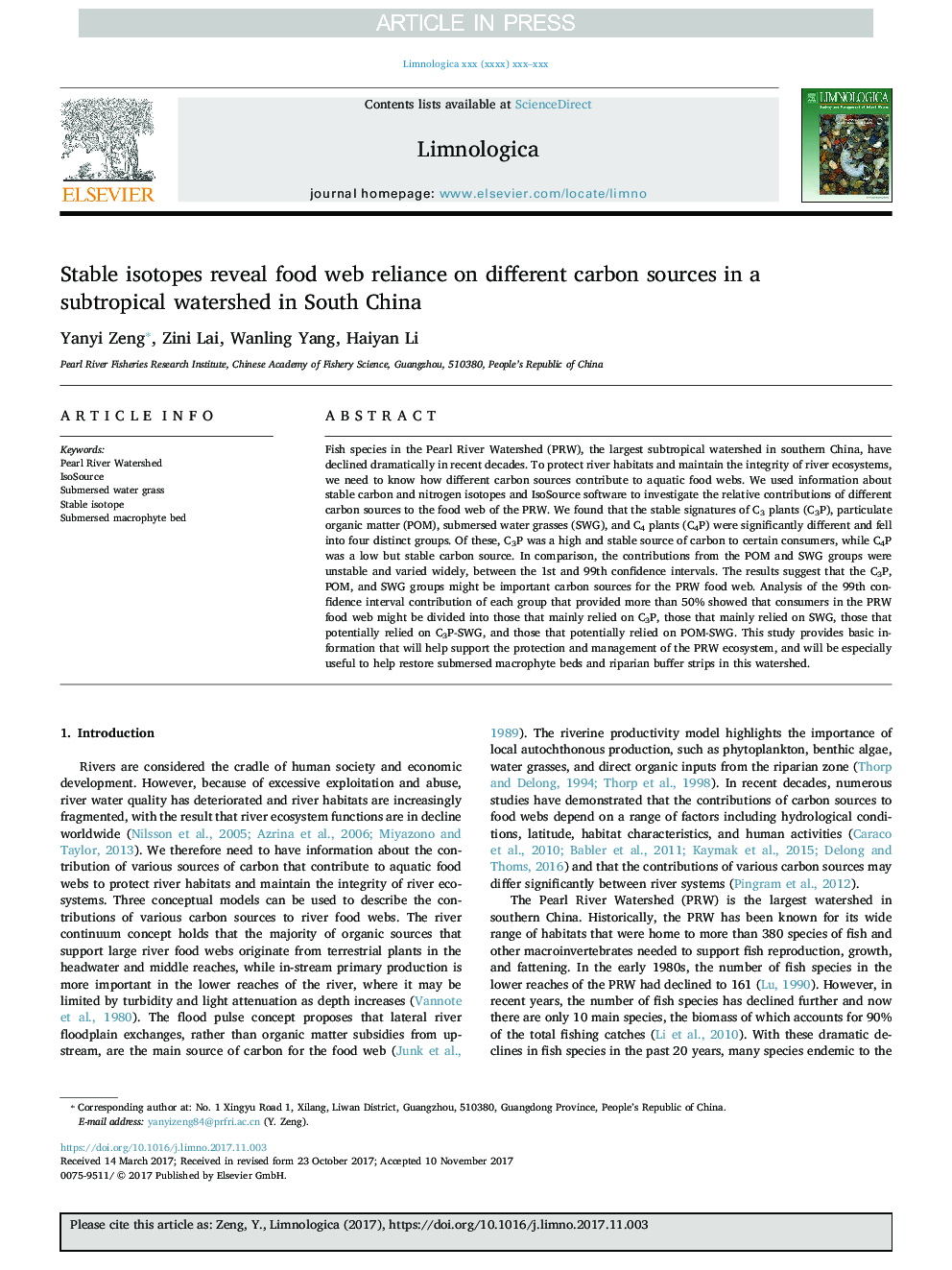| Article ID | Journal | Published Year | Pages | File Type |
|---|---|---|---|---|
| 8849385 | Limnologica - Ecology and Management of Inland Waters | 2018 | 7 Pages |
Abstract
Fish species in the Pearl River Watershed (PRW), the largest subtropical watershed in southern China, have declined dramatically in recent decades. To protect river habitats and maintain the integrity of river ecosystems, we need to know how different carbon sources contribute to aquatic food webs. We used information about stable carbon and nitrogen isotopes and IsoSource software to investigate the relative contributions of different carbon sources to the food web of the PRW. We found that the stable signatures of C3 plants (C3P), particulate organic matter (POM), submersed water grasses (SWG), and C4 plants (C4P) were significantly different and fell into four distinct groups. Of these, C3P was a high and stable source of carbon to certain consumers, while C4P was a low but stable carbon source. In comparison, the contributions from the POM and SWG groups were unstable and varied widely, between the 1st and 99th confidence intervals. The results suggest that the C3P, POM, and SWG groups might be important carbon sources for the PRW food web. Analysis of the 99th confidence interval contribution of each group that provided more than 50% showed that consumers in the PRW food web might be divided into those that mainly relied on C3P, those that mainly relied on SWG, those that potentially relied on C3P-SWG, and those that potentially relied on POM-SWG. This study provides basic information that will help support the protection and management of the PRW ecosystem, and will be especially useful to help restore submersed macrophyte beds and riparian buffer strips in this watershed.
Keywords
Related Topics
Life Sciences
Agricultural and Biological Sciences
Aquatic Science
Authors
Yanyi Zeng, Zini Lai, Wanling Yang, Haiyan Li,
